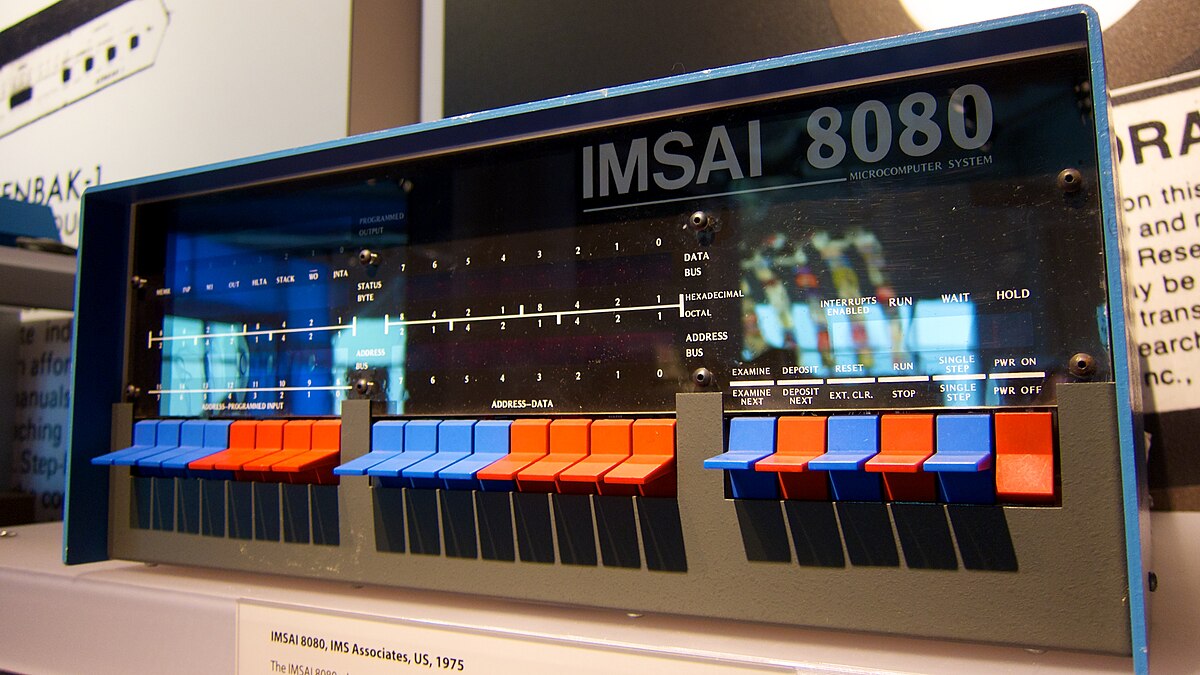I figured there might be a few of us still alive and kicking with real hardware experience...
Never worked on a PDP/8, but scrapped one for parts back in the 90s. Still got the front panel somewhere.. why I don't know

Bought my PDP11/40 when I was in college in early 80s..working as an E tech, so had access to too many gadgets that cost way too much of my income. My 11/40 had 3 "disc drives", IE a 19" rack, each drive weighed around 90 lbs, used over 500W, and gave a whopping 2.5MW (mega word, 18 bit) storage... yes, a whopping 5 MB storage, and needed "only" 1500W to run it.. Upgraded to 256MB solid state RAM, hung a Decwriter LA36 on it, and thought it was the cat's meow. Didn't want a paper tape reader, and I had all I wanted from punchcards... happy to have those huge disc drives. Especially fun to put them in diagnostic mode, seek test, and watch the room lights flicker as the 19" rack would try to walk across the floor like a washing machine with out of balance load of clothes. OK, I was easily amused...

Somewhere I still have a core memory board... that was a wild concept back then. Then SRAM came along, and core memory became instant dinosaur, like so many other "state of the art" technologies.
Also had a Data General Nova 3. Liked that machine too, similar specs to the DG PDP. Most common problem I ran into was blown RS232/485 line driver chips/transistors due to line transients, or more likely someone hot-plugging a terminal. Yep, everything was repaired at the component level. Didn't toss a board just because it quit.. A typical mini mainframe board cost more than most cars then, so you had to fix it unless it was beyond repair. Got out of the computer repair biz when it all went throw-away. Companies didn't want to pay for skilled techs, just hire kids, give them a cheat-sheet to pull-n-swap boards, and call the board swappers technicians. My view was, if you didn't know what was happening at the chip (if not the gate) level, you weren't a tech, but a swapper. Now we don't fix anything, not sure it's even possible. I couldn't even see components today, if I could even find parts and had the surface mount soldering equipment. Not worth the effort. Computers are toasters. Toss and buy another. Programmed on a DE VAX, but never owned one. Tried a MicroVax (that was back when the word "VAX" had a completely different meaning!!), but got into VME bus MC68K machines and never looked back. Still have some old MC680X0 based machines, and they still work perfectly. Ran unix and microware OS9, loved it. Best machines I ever used.
Those were the days. Got paid to have fun, working on and using machines I actually enjoyed. But it is mind boggling that the little Raspberry Pi4 that fits inside my palm has far more power than all of the old equipment I had/worked on - put together. Back then, that was SciFi that even I didn't think would ever happen. Go from a room full of mainframe eqpmt weighing tons and using tens of KWs to a device the size of a deck of cards using a few watts, and orders of magnitude more powerful. Guess it's just that much more amazing when you have enough gray hair to remember from whence we came.

 Cleaning out 5 decades of my electronics collection (which the wife does not understand), ran across lots of old memories... and some stuff I don't recall what it is, where I got it, or why. Aging is such fun.
Cleaning out 5 decades of my electronics collection (which the wife does not understand), ran across lots of old memories... and some stuff I don't recall what it is, where I got it, or why. Aging is such fun. 
 Yes, I actually used this machine and others like it - back when things were made to be serviced, not tossed out.
Yes, I actually used this machine and others like it - back when things were made to be serviced, not tossed out.
 Yes, I actually used this machine and others like it - back when things were made to be serviced, not tossed out.
Yes, I actually used this machine and others like it - back when things were made to be serviced, not tossed out.


 Somewhere I still have a core memory board... that was a wild concept back then. Then SRAM came along, and core memory became instant dinosaur, like so many other "state of the art" technologies.
Somewhere I still have a core memory board... that was a wild concept back then. Then SRAM came along, and core memory became instant dinosaur, like so many other "state of the art" technologies.







